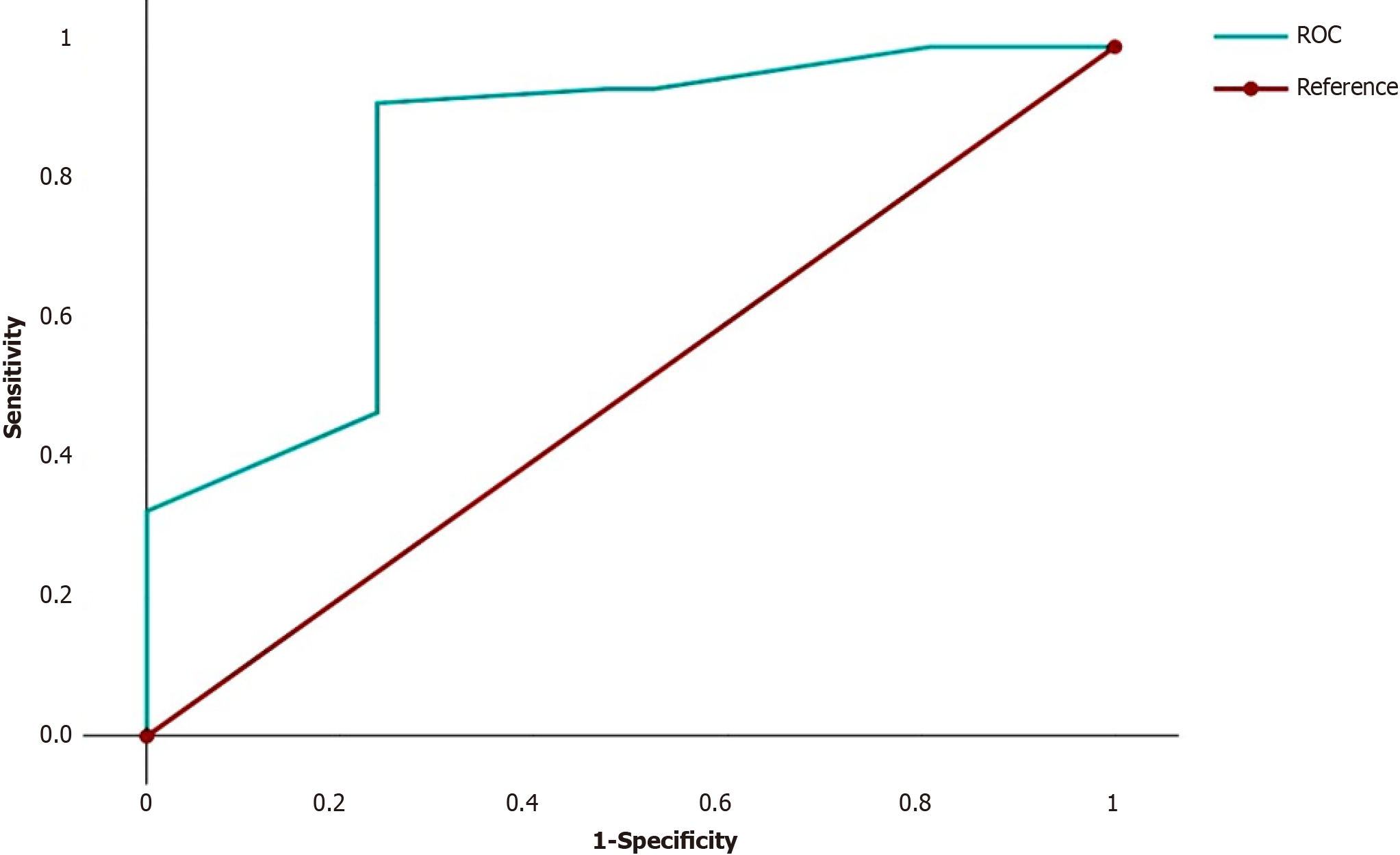Copyright
©The Author(s) 2024.
World J Exp Med. Mar 20, 2024; 14(1): 89319
Published online Mar 20, 2024. doi: 10.5493/wjem.v14.i1.89319
Published online Mar 20, 2024. doi: 10.5493/wjem.v14.i1.89319
Figure 1 Loose fine-fiber connective tissue of the tumor stroma.
Mayer's hematoxylin and eosin staining (× 400).
Figure 2 Features of parenchymal and stromal components of lung squamous cell carcinoma.
A: Microvessels in the tumor solid component; B: The fragmentation of the tumor solid component; C: The phenomenon of peritumoral retraction clefting; D: Spread of the tumor through the alveolar air spaces. Mayer's hematoxylin and eosin staining (× 200).
Figure 3 Receiver operating characteristic curves discriminating between cases of lung squamous cell carcinoma with and without disease recurrence.
ROC: Receiver operating characteristic.
Figure 4 The relapse-free survival and overall survival curves for the patients with lung squamous cell carcinoma.
A: RFS curves of patients with the sum of the odds ratios (ORs) less (red line) and more than 26.2 (blue line); B: Overall survival curves of lung squamous cell carcinoma patients with the sum of the ORs less (red line) and more than 26.2 (blue line).
- Citation: Senchukova MA, Kalinin EA, Volchenko NN. Predictors of disease recurrence after radical resection and adjuvant chemotherapy in patients with stage IIb-IIIa squamous cell lung cancer: A retrospective analysis. World J Exp Med 2024; 14(1): 89319
- URL: https://www.wjgnet.com/2220-315x/full/v14/i1/89319.htm
- DOI: https://dx.doi.org/10.5493/wjem.v14.i1.89319












